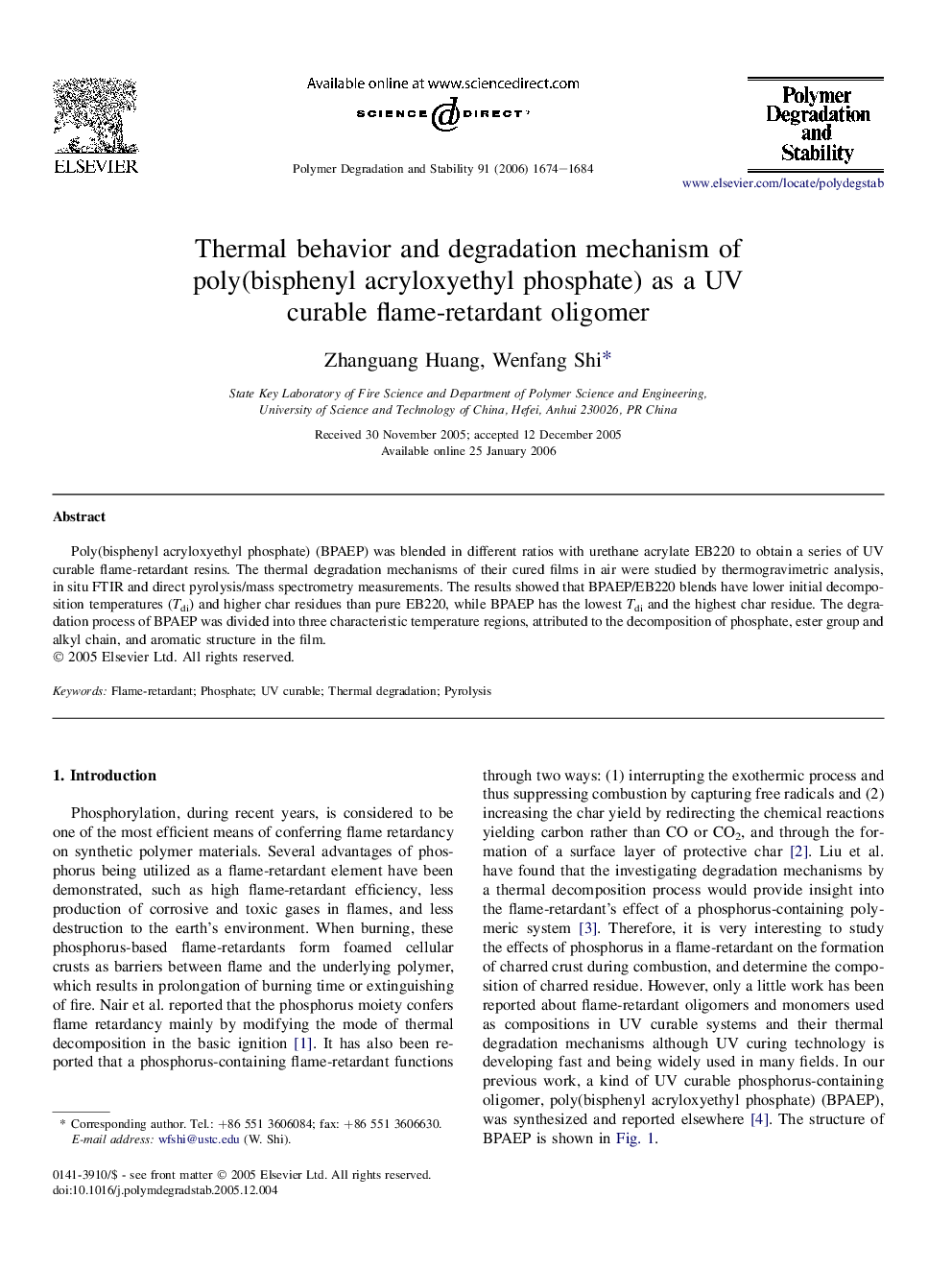| Article ID | Journal | Published Year | Pages | File Type |
|---|---|---|---|---|
| 5204522 | Polymer Degradation and Stability | 2006 | 11 Pages |
Abstract
Poly(bisphenyl acryloxyethyl phosphate) (BPAEP) was blended in different ratios with urethane acrylate EB220 to obtain a series of UV curable flame-retardant resins. The thermal degradation mechanisms of their cured films in air were studied by thermogravimetric analysis, in situ FTIR and direct pyrolysis/mass spectrometry measurements. The results showed that BPAEP/EB220 blends have lower initial decomposition temperatures (Tdi) and higher char residues than pure EB220, while BPAEP has the lowest Tdi and the highest char residue. The degradation process of BPAEP was divided into three characteristic temperature regions, attributed to the decomposition of phosphate, ester group and alkyl chain, and aromatic structure in the film.
Related Topics
Physical Sciences and Engineering
Chemistry
Organic Chemistry
Authors
Zhanguang Huang, Wenfang Shi,
